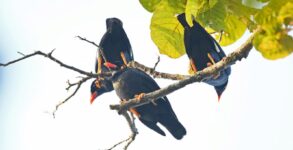World Rhino Day is observed on September 22 every year. Of the five rhino species living in Africa and Asia, three are listed by the IUCN as Critically Endangered: Javan Rhinos (Rhinoceros sondaicus), Sumatran rhinos (Dicerorhinus sumatrensis), and black rhinos (Diceros bicornis). Meanwhile, White rhinos (Ceratotherium simum) are considered near threatened, and greater one-horned rhinos (Rhinoceros unicornis) vulnerable to extinction.
History of World Rhino Day:
The World Rhino Day was first announced by World Wildlife Fund (WWF)-South Africa in 2010. In the year 2011, World Rhino Day grew into an international success. The day encompasses both African and Asian rhino species.
In India, the greater one-horned rhino (also called the Indian rhino) increases in number thanks to conservation efforts. Today, there are more than 3,500 of these rhinos. However, they are still considered vulnerable. The Black rhino is also critically endangered. Of the five rhino species, white rhinos boast the highest numbers, with more than 20,000. Things that threaten rhinos include poaching, loss of habitat, disease, and natural disasters. Some people hunt rhinos because they believe the horns have powerful healing properties. They illegally sell the horns to be ground into powder.
Fascinating Rhino Facts:
- Rhinos are ancient, having been around for over 50 million years. Rhinos were much woollier in prehistoric times, but otherwise, they have not evolved much.
- Rhinos have very poor eyesight, but this is more than made up for by their other senses. A rhino would have great difficulty seeing someone standing just 30 meters away if they weren’t moving. If the person moves, makes a sound, or can even be smelled by the rhino however, it will easily detect that person, even at much greater distances.
- Rhino horn is made up of keratin – the same protein which forms the basis of our hair and nails.
- There are now five different species of rhino in the world. Two of these are native to Africa, the Black Rhinoceros and the White Rhinoceros – and three of these are native to Asia, the Indian Rhinoceros, Javan Rhinoceros, and Sumatran Rhinoceros. The Black Rhinoceros, Javan Rhinoceros, and Sumatran Rhinoceros are all listed as Critically Endangered, this means that they have a 50% chance of becoming extinct in the next three generations.
- African rhinos and oxpeckers (a type of bird) have a fascinating symbiotic relationship. The oxpecker stands on the rhino’s back and eats ticks and other insects that it finds on the rhino. If the oxpecker senses danger, it will always create a commotion, which helps to alert the rhino to it as well.


















